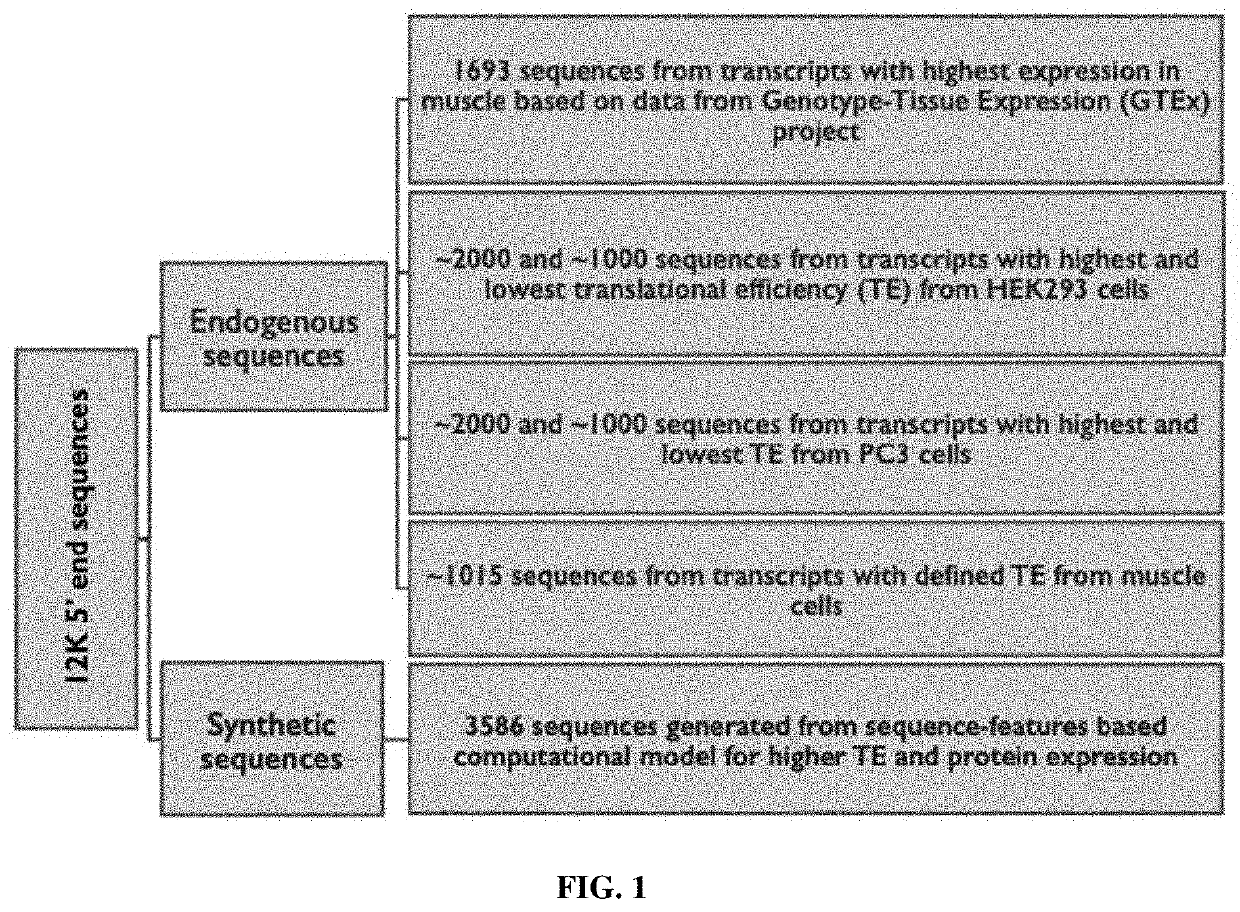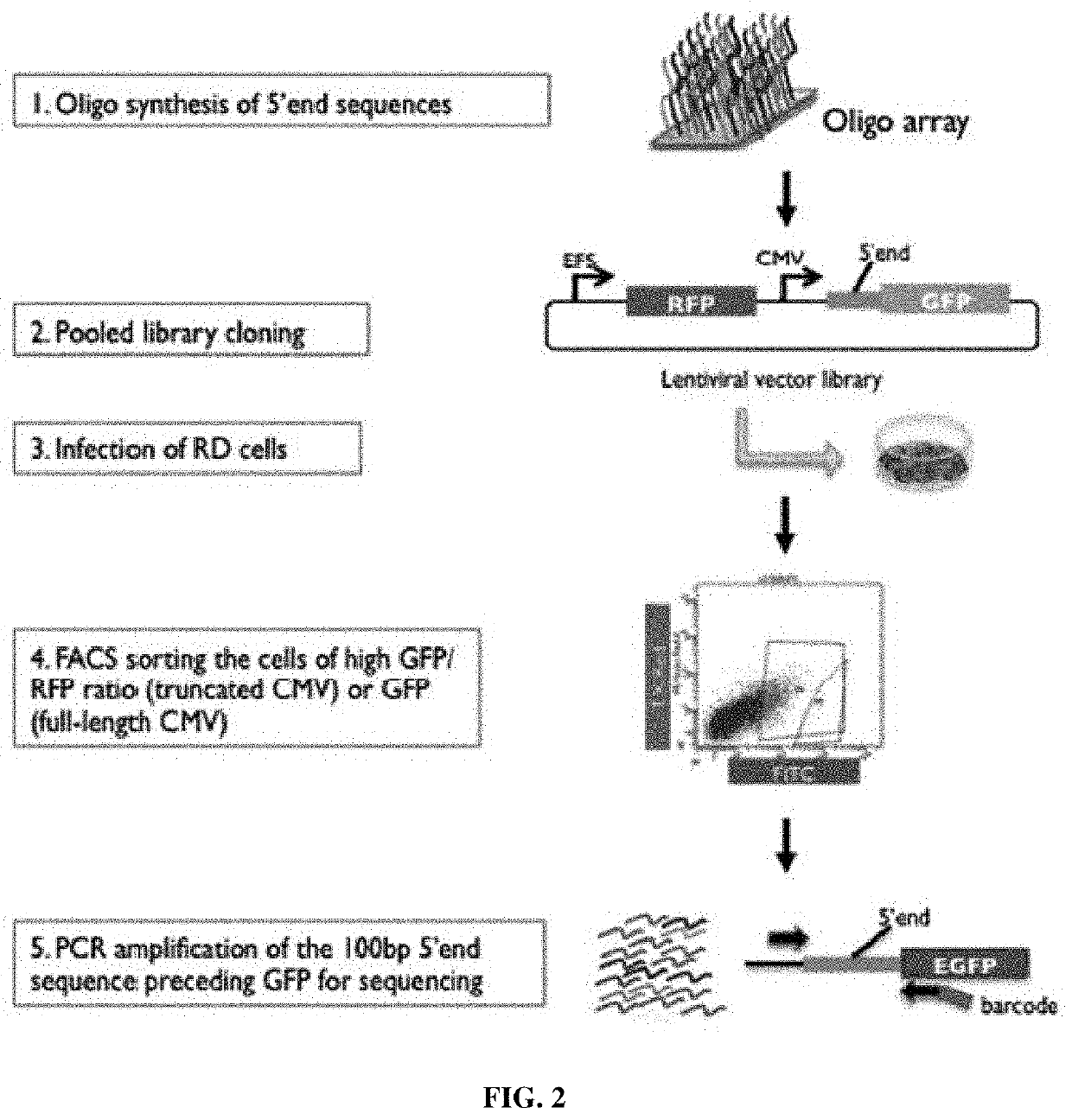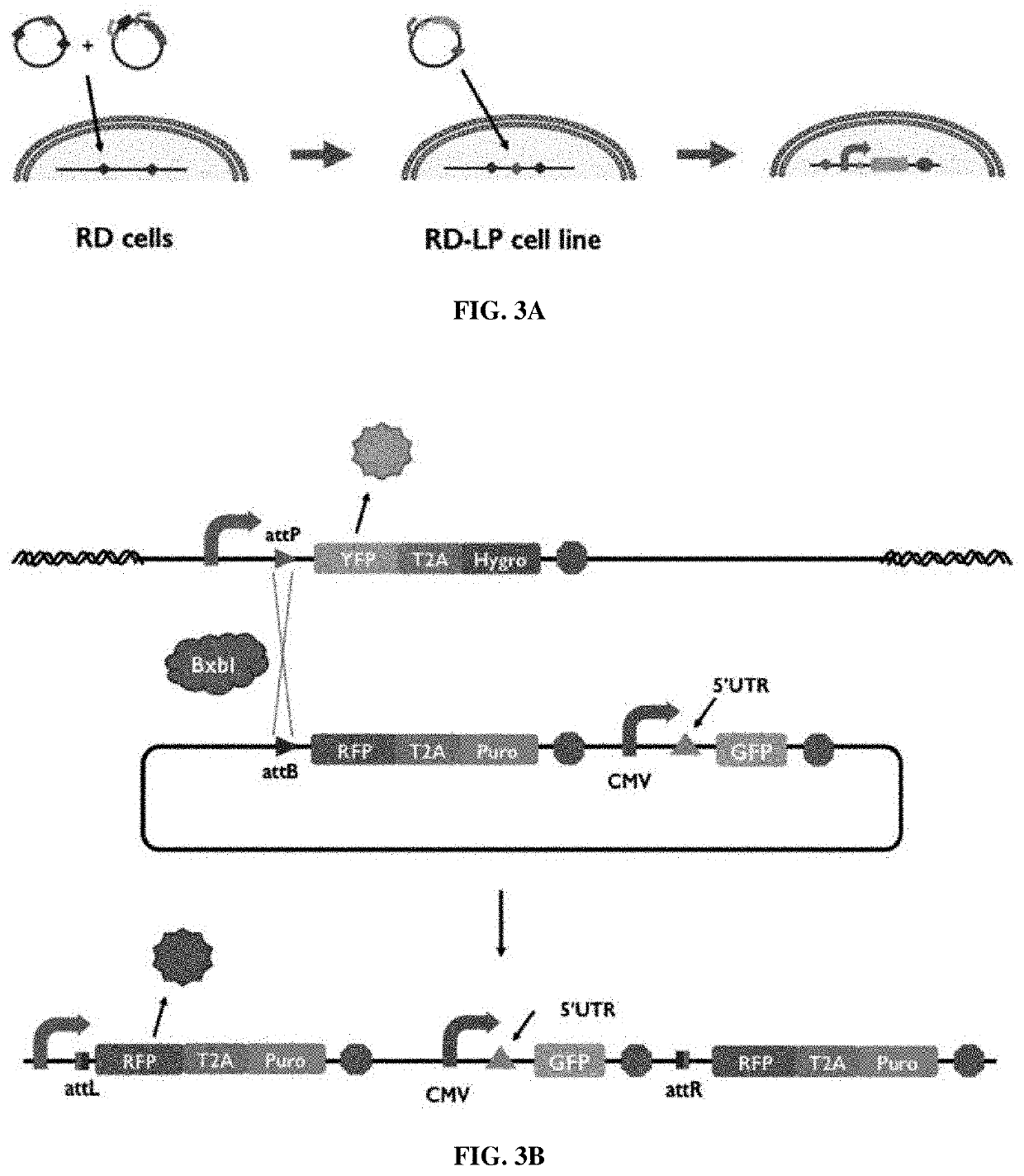Synthetic 5' utr sequences, and high-throughput engineering and screening thereof
a technology of synthetic 5′ utr sequences and utr sequences, applied in the field of new 5′ utr sequences, can solve the problems of limited knowledge of how 5′ utr sequences modulate protein abundance, and achieve high heterogeneous gene expression, eliminate copy number and position effects, and improve protein expression.
- Summary
- Abstract
- Description
- Claims
- Application Information
AI Technical Summary
Benefits of technology
Problems solved by technology
Method used
Image
Examples
example 1
ughput Untranslated Region Engineering and Screening
Introduction
[0135]Biological targets or drug targets are mostly proteins or nucleic acids, whose activity can be modified when interacting with a drug. Although a number of drug targets have been identified via experimental or computational methods, only a small portion of them (about 20%) are actually “druggable” (1, 3). Classical small-molecule drugs can penetrate the cell membrane—and can target not only cell surface targets, but also intracellular targets. However, due to their small molecular weights and few functional groups, small-molecule drugs can only interact with drug targets with hydrophobic pockets, which account for only 10% of the total putative drug targets (43-46). Another emerging type of drug, biologics, can instead potentially interact with virtually any drug target. However, biologics cannot penetrate the cell membrane—and thus can only interact with extracellular targets, which account for another 10% of the ...
example 2
ughput 5′ UTR Engineering for Enhanced Protein Production in Non-Viral Gene Therapy
Introduction
[0167]Most drug targets are proteins whose activities are modified by interactions with drugs. Although a number of drug targets have been identified via experimental or computational methods, only a fraction of them are actually “druggable” with small molecule drugs or monoclonal antibodies (1-3), which greatly limits our arsenal of treatments for important human diseases. Gene therapy, which implements the in vivo production of therapeutics, can address virtually all disease targets and even restore the activities of intracellular proteins.
[0168]Non-viral DNA therapy, a disruptive technology using DNA plasmids to produce therapeutic proteins or vaccine antigens in vivo, offers significant advantages over traditional virus-mediated gene therapies (4-6). First, non-viral DNA therapy is potentially safer than lentiviral therapies as the odds of gene integration into the genome are reduced, ...
PUM
 Login to View More
Login to View More Abstract
Description
Claims
Application Information
 Login to View More
Login to View More - R&D
- Intellectual Property
- Life Sciences
- Materials
- Tech Scout
- Unparalleled Data Quality
- Higher Quality Content
- 60% Fewer Hallucinations
Browse by: Latest US Patents, China's latest patents, Technical Efficacy Thesaurus, Application Domain, Technology Topic, Popular Technical Reports.
© 2025 PatSnap. All rights reserved.Legal|Privacy policy|Modern Slavery Act Transparency Statement|Sitemap|About US| Contact US: help@patsnap.com



